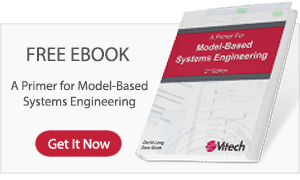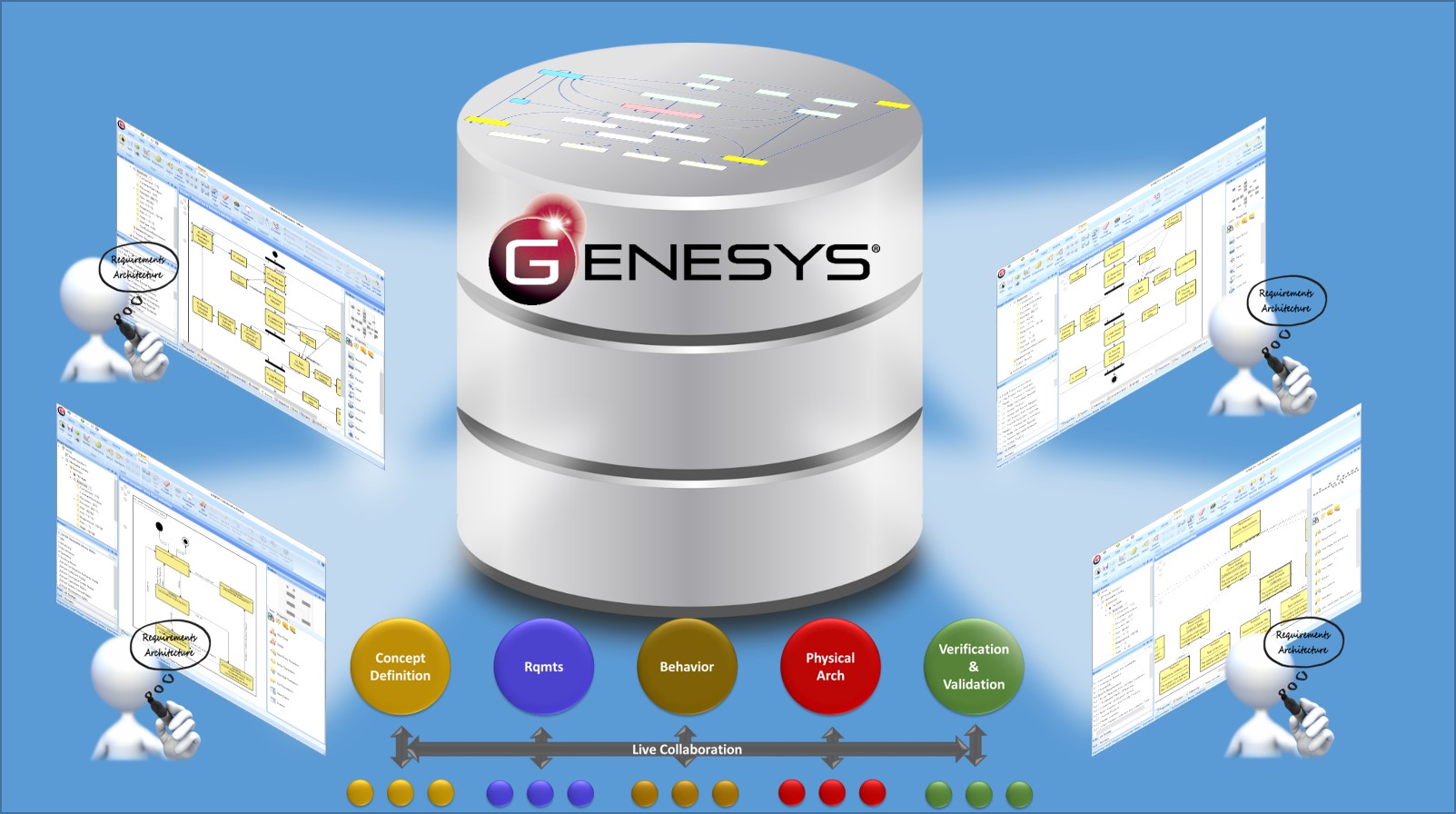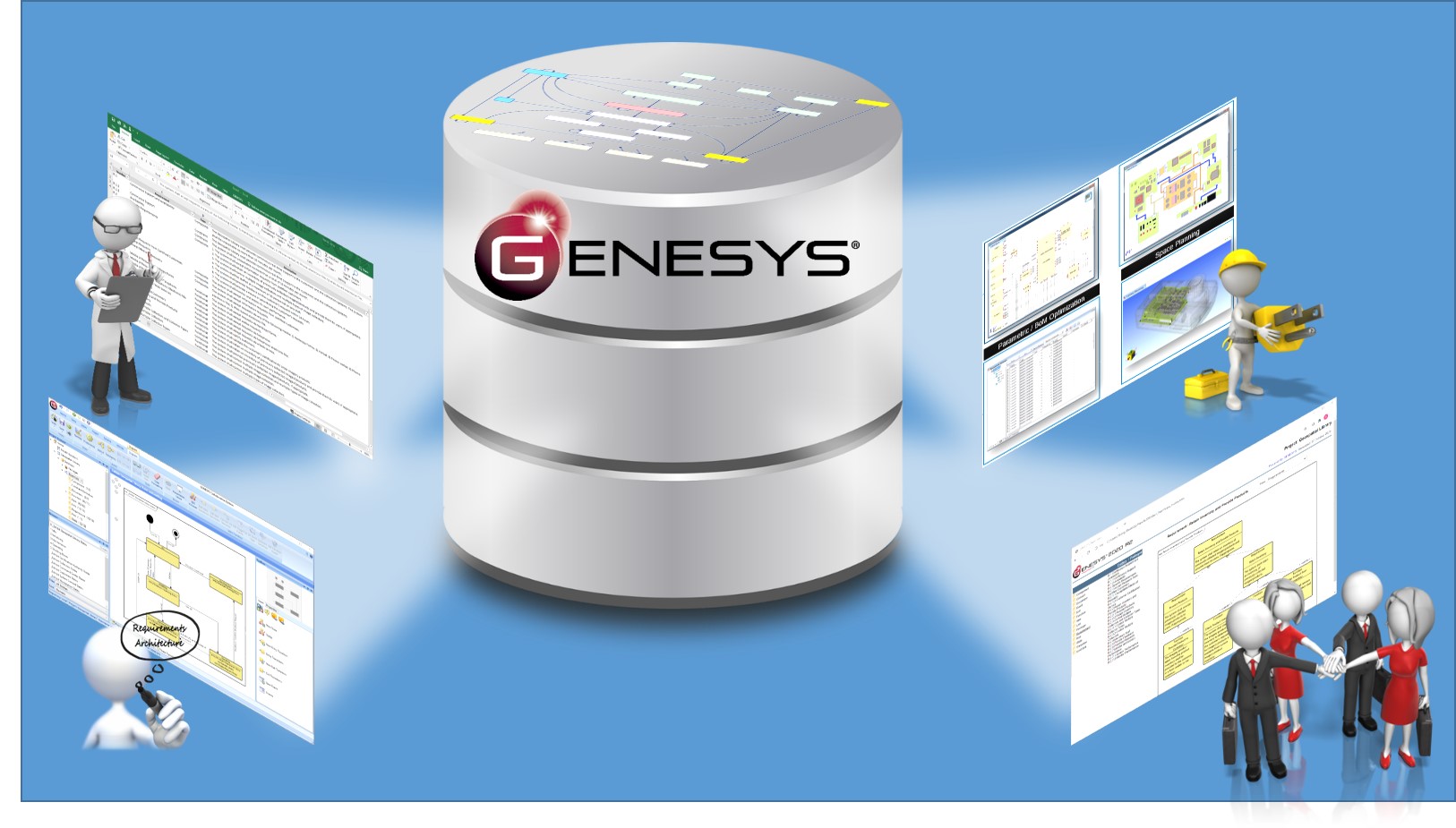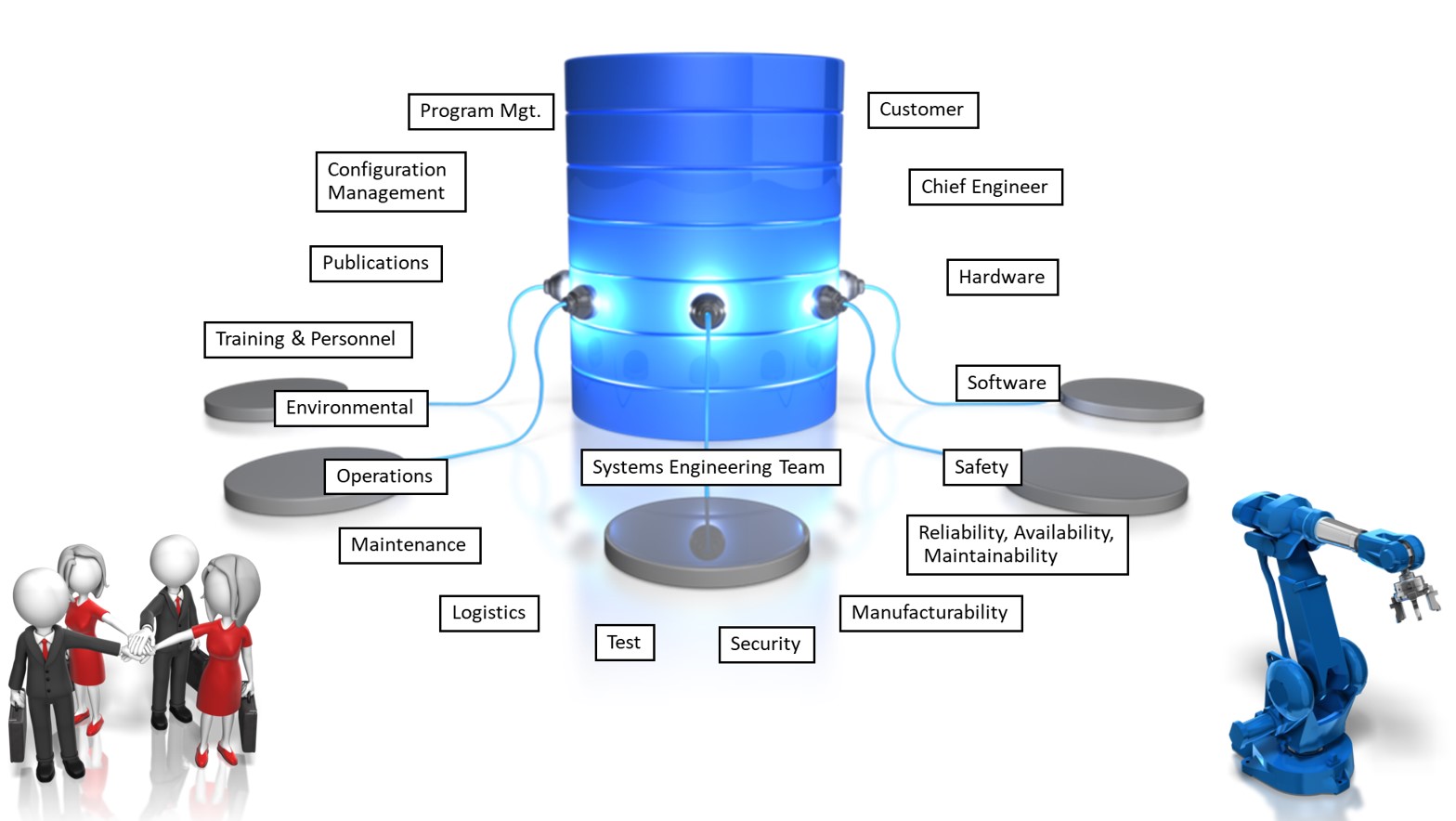Systems engineering is a collaborative effort
Check-out / check-in models that partition and serialize contributions slow project timelines and inhibit team effectiveness. Concurrent contribution and live collaboration accelerate projects while increasing overall agility—key in today’s environment which rewards those who can rapidly deliver new capabilities and meet ever-evolving needs.
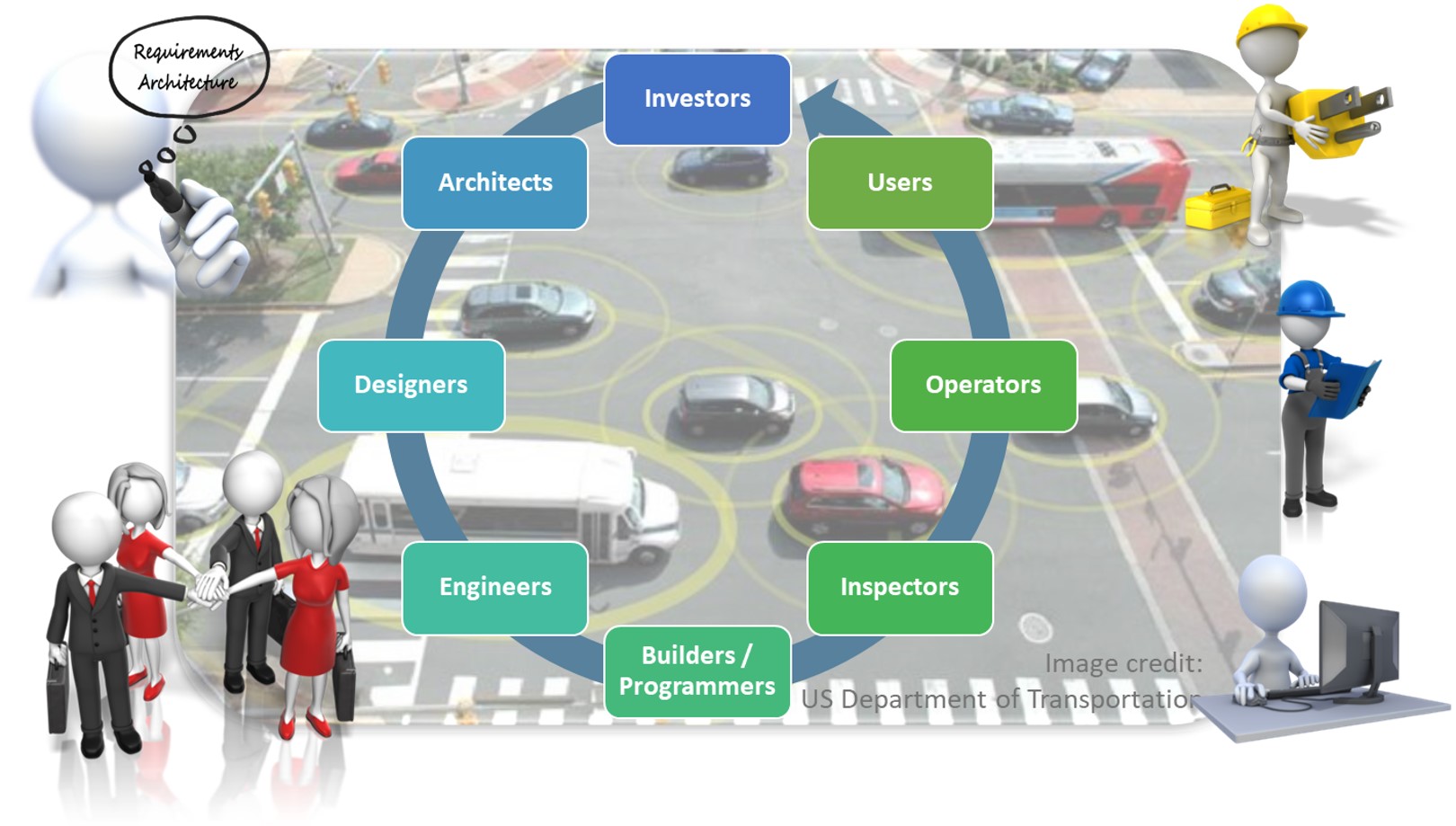
Whether working within an office or across a distributed virtual environment, you need the ability to collaborate real-time on your engineering projects, with the assurance that all team members are drawing data from the same source. GENESYS delivers an authoritative systems source of truth from first statement of need through architecture and verification. Expose the what and why of system design to the engineering enterprise, enabling team-wide perspective and analysis. Connect your systems engineering team and subject matter experts as they develop the system solution, engage stakeholders with up-to-date information, and seamlessly communicate the design envelope to detailed engineers, accelerating the design process while eliminating errors.
Stay on top of your project milestones with real-time collaboration:
Take advantage of a tool designed specifically for collaborative team environments.
GENESYS has been designed for collaborative team environments of any size, from two users to hundreds. Rather than forcing teams to segment their systems efforts and limit their effectiveness, GENESYS enables teams to work concurrently on the same design, ensuring everyone is working with the most up-to-date information at all times. Within this framework, access control, versioning, partitioning, and baselining provide the power you need—live collaboration with effective design management. Underneath it all is the power of Microsoft SQL Server enabling you to scale effectively from the workgroup to the enterprise.
Reduce barriers to entry to engage systems engineers and stakeholders alike.
Tools that require specialized systems modelers to develop and access the system architecture silo systems engineering, reducing its effectiveness. Democratize access and eliminate the need for “tool jockeys.” Designed by systems engineers for systems engineers in the native language of systems engineering, GENESYS lowers the barriers of entry. Members of the systems engineering team leverage a modern user interface to develop the system solution. The open architecture of GENESYS enables the extended systems team to access and update the system repository from a variety of connectors ranging from Microsoft Office plug-ins to specialized engineering tools to custom web interfaces. And up-to-date artifacts generated on-demand enhance communication with stakeholders throughout the lifecycle. Distribute information and access to the edges of your organization, and unlock the power of the systems source of truth.
Operate with the confidence that completeness and consistency are ensured.
Built upon the foundation of a proven systems metamodel and powered by modern technology, you can be sure that the data you pull from the tool is complete and consistent. An integrated repository, powerful view framework, and collaborative environment ensure changes made by any user update all views so that the team has a consistent view at all times. Effective propagation of information and consistency drive individual understanding, team alignment, and project velocity, enabling you to go farther and faster with confidence.
Gain huge efficiencies from real-time collaboration.
Whether you’re doing top-down, bottom-up, or middle-out systems engineering, the collaborative capability of Vitech tools allows everyone to be at exactly the same place on the project, working from the same information instantaneously accessed from a single repository. You can present one idea captured in one place with the right information delivered in the right presentation on demand to enhance analysis and communication. No time is lost trying to assess if everyone is working from the latest update. No rework is necessary due to a discovery that someone has performed unnecessary and incorrect work because of working from outdated information. You benefit from collective intelligence moving at the speed of thought.

